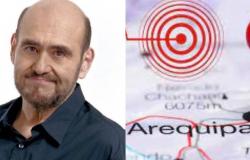This week the results of the survey Criteria corresponding to June, a context in which it became clear that President Gabriel Boric capitalized 33% of approvalwhich consolidates him as the president who reaches the highest level of support in the middle of the third year of administration during the last decade.
Specifically, the detail indicates that with this percentage, it prevails over Michelle Bachelet in 2016, and Sebastián Piñera in 2020, comparing the same period of their administrations.
Specifically, in June of the aforementioned year, the then representative achieved approval from 22% (Adimark 2016), while pineapple reached a 17% during the same month, 2020.
“It is reflected in the hard vote”
How the percentage achieved by Boric in the recent measurement is explained is what we discussed with Felipe Vergara, political analyst and academic at the Andrés Bello University (UNAB), who breaks down the Criteria result.
«I would dare to say that this presidential approval, compared to that of the other presidents in the same periods, has a more direct reflection in the hard vote that President Boric has, this vote that he had in the first round, close to the 25% that is unconditional to the President, and that will possibly be therefore his floor, no less than 25%, 24%, because there is this vote that is hard and, regardless of how good or bad he (does it), it still remains supporting him,” he says.
As the academic explains, “that did not happen with President Piñera, because that hard vote was not such, it was like a rather hesitant vote, dependent on action. And the same thing happened, to a slightly lesser extent, with President Bachelet.
However, the teacher points out, “in the case of Boric there is a certain unconditionality that will make it difficult for him to go much lower than the low levels he has been at.”
Closeness and affinity
«People also value the way in which the President deals with issues. When you have to apologize, ask for it without hesitation, when you have to get tough, you get tough, it is the example of Ukraine and Palestine, but also recognize this humility to (admit) that when he was in opposition, it was not necessarily entirely constructive…”, he adds.
«These attributes generate closeness and affinity among citizens, there are sectors that may bother them, but the vast majority sees him as a close Presidentlike the President who rides a bicycle, who goes to eat a sandwich on the corner, and who has not stopped being like he was and as is most people,” adds Vergara.
The above, he maintains, “despite having this role and this presidential hierarchy.”
And “if we add to that that there is also a valuation of economic management, which is always important, those are other attributes that allow us to demonstrate that people have greater affinity with the management that they are developing,” he asserts.
«People manage to differentiate»
Doing another analysis, the academic provides a vision that transcends the administration led by the President. «A little further on, I feel that he It is much more than his government“Many times governments are better than their presidents, but well… the government does well, so no matter how affable or friendly the President may be, if the government does well, one manages to transfer that to the presidential image as well,” says.
“But in this case, I feel that the President is much more than his government and people manage to differentiate between the actions of certain ministries, and the role that the President has,” adds Vergara.
He even adds, “that is a view that is also quite transversal, there is more affinity with him in opposition sectors than with the government that he leads.”
However, according to the academic, although “these attributes support the support, the main support is given by the unconditionality of the most extreme left sector whom he represents.
Double reading
Continuing with his breakdown, the political analyst questions “how this result could be read”, making it clear that “two careful readings must be made. One, of course, better than the other presidents in this period, but he also started much lower than the other presidents and has not managed to reverse that trend, but has remained at this point, and that is not very good either.
“Their mobility margins are low»he emphasizes next line.
In fact, he states that Boric “is hardly going to reach the levels of approval that President Bachelet had, just as he is very unlikely to reach the levels of disapproval that President Piñera had, so his bands move between 25% and 35%.” »,
Consequently, Vergara says, “it cannot go down much more, but it is not going to go up much more either, and we are already in the electoral period, where for the sector he represents, having a President with a percentage of 30%, 35%, is not “It helps him for his electoral campaign and to have an option for presidential alternation.”
“No more than for parliamentary, mayoral, or senatorial aspirations, that is also a complicated point, that affinity will not permeate the rest, only that 35% that is its hard base,” he concludes.






